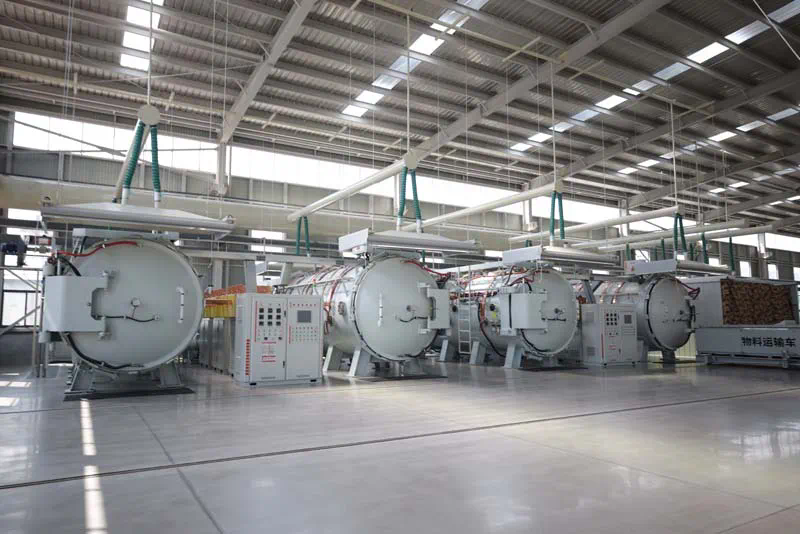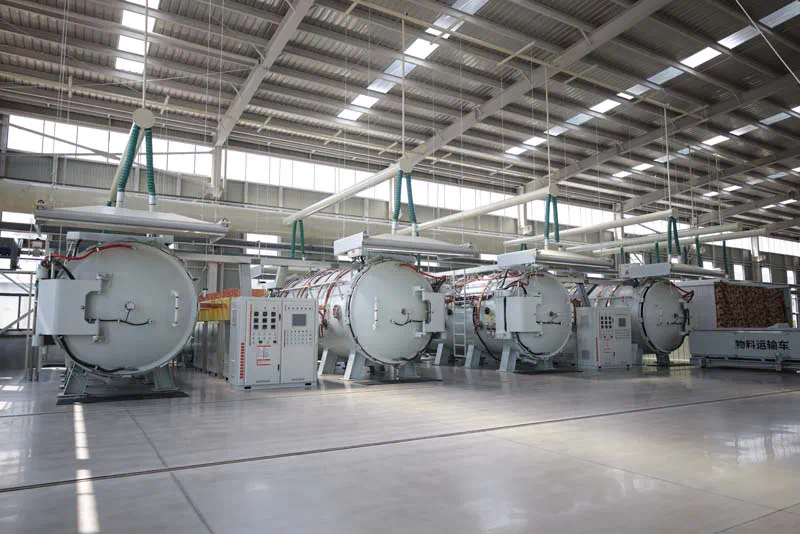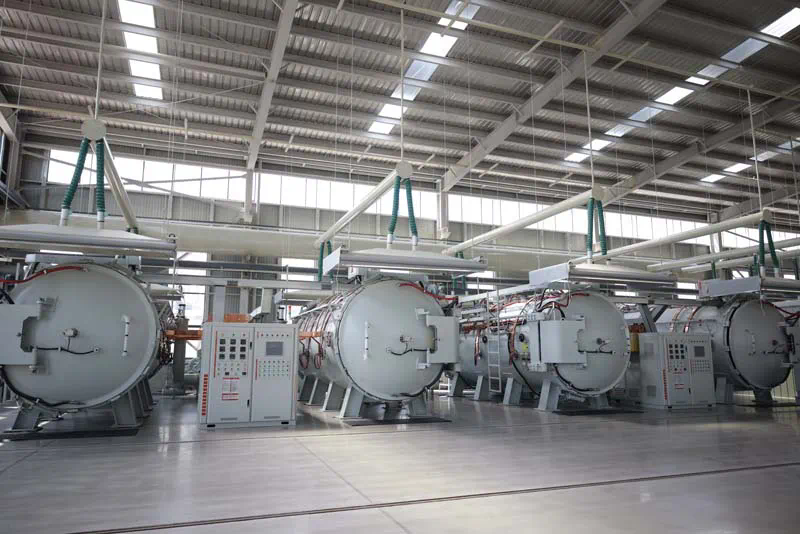Speaking of smart factories, we must start from 1913 when Ford in the United States launched a factory-wide conveyor system. This project began to sprout in 1907, but it was not officially put into mass production until 1913. After the new production method came into operation, the time for the Ford factory to produce a car was reduced from 12.5 working hours to 5 hours and 50 minutes. By the summer of 1914, the new assembly line could be assembled in one hour and 33 minutes. Moreover, with the continuous improvement of the assembly line project, the efficiency record of the Ford factory is being refreshed every day, and the annual output has soared from 788 vehicles to 730,000 vehicles in the fourth year.
The cars produced by Ford may not have surpassed the technological level of the time, but the production method produced by Ford marked a new era in the history of world industry, that is, the advent of the era of large-scale automatic production. After more than 100 years of development, the era of automation has begun to enter the era of intelligence. Intelligent production is about to enter a white-hot stage, and the era of smart factories is about to come.
What is a smart factory?
In the past, automated factories also required the assistance of a large number of hardware engineers during the production process, and workers were required to work 24 hours a day to monitor the production line to see if there would be machine failures. With a smart factory, timely warning and error correction functions allow workers to save more worry and effort. In the process of development, the smart factory will also change its working mode according to order requirements, and the utilization of electricity, material resources and productivity will gradually reach peak. Smart factory is a new stage in the development of modern factory information. Traditional industrial production adopts the M2M communication mode (Machine-to-Machine/Man) to realize communication between devices. The Internet of Things realizes intelligent, interactive and seamless connections between people, devices and systems through Things to Things communication. On the basis of automated and digital factories, smart factories build a humanized factory that is efficient, energy-saving, green and environmentally friendly, and has a comfortable environment.
In industries such as petrochemicals, steel, machinery and equipment manufacturing, automobile manufacturing, aerospace, and aircraft manufacturing, smart factories have been highly developed. “Made in China 2025” clearly proposes to promote the intelligentization of the manufacturing process and pilot the construction of smart factories/digital workshops in key areas, which will certainly accelerate the application and promotion of smart factories in the industrial industry.
Smart factory features
The development of “smart factories” is a new direction for the development of smart industry. But not all smart factories can be called smart factories. How to judge whether this factory is a smart factory? We can start with the following five features:
1. The system has autonomous capabilities: it can collect and understand information from the outside world and itself, and use it to analyze, judge and plan its own behavior.
2. Practice of overall visual technology: Combining signal processing, reasoning and prediction, simulation and multimedia technology to amplify reality to display the design and manufacturing process in real life.
3. Coordination, reorganization and expansion features: Each group in the system is responsible for forming the best system structure according to the work tasks.
4. Self-learning and maintenance capabilities: Through the system’s self-learning function, the database can be supplemented and updated during the manufacturing process, and fault diagnosis can be automatically performed, and the ability to troubleshoot and maintain, or execute the system can be achieved.
5. A system in which humans and machines coexist: humans and machines have a mutual coordination and cooperation relationship, and each complements each other at different levels.
Advantages and Disadvantages of Smart Factory
It is understood that the establishment of smart factories will not only help improve asset efficiency, production quality, and reduce corporate costs, but also create a safer production process and maintain the sustainability of production, among other benefits. This is mainly manifested in the following five aspects:
1. Asset efficiency
Every aspect of a smart factory generates large amounts of data, and through continuous analysis, asset performance issues that may require some kind of corrective optimization can be discovered. There are obvious differences between smart factories and traditional automated factories with this correction function. Without human intervention, automated factories will keep rushing forward towards higher production capacity and more products, while smart factories will adjust the performance of machines according to actual needs. Working hours, it’s like assigning a general to a group of soldiers.
2. Quality
Self-optimization unique to smart factories can more quickly predict and detect quality defect trends and help identify human, machine or environmental factors responsible for poor quality. More optimized quality processes result in higher quality products with fewer defects and recalls. The factory is equipped with electronic billboards to display real-time production dynamics. At the same time, operators can remotely participate in the correction or command of the production process.
3. Lower costs
Traditionally, optimizing processes has led to better cost efficiencies—with more predictable inventory needs, more effective hiring and staffing decisions, and reduced processes. Higher quality processes can also mean a comprehensive view of the supply network and fast, delay-free responses to procurement needs, further reducing costs.
4. Safety and sustainability
Smart factories can also bring real benefits to workplace health and environmental sustainability. Greater process autonomy reduces the potential for human error, including accidents that cause injury. Using Internet of Things technology to achieve efficient information interconnection between devices, the digital factory is upgraded to an “Internet of Things factory”. Operators can obtain dynamic production data between production equipment, materials, and finished lamps to meet the factory’s 24-hour monitoring needs. The relative self-sufficiency of smart factories may replace certain roles that require repetitive and fatiguing activities.
5. Improvement of manufacturing process
Based on a huge database, smart factories can realize data mining and analysis, enabling the factory to have self-learning capabilities, and on this basis, complete tasks such as optimization of energy consumption and automatic judgment of production decisions.
Taking a garment factory as an example, the China Sewing Machinery Association said that the introduction of the TIMS Zhiyun 1.0 intelligent production management system on an automated factory can increase the overall production efficiency by 20%, reduce the defective rate by 30%, and save 8-10 working hours per person. Today, abnormal downtime is reduced by 80%, greatly improving profit margins.
Of course, smart factories will also face many problems. The biggest problems are structural problems and technical problems.
At present, both traditional industries and Internet companies want to promote the development of the Industrial Internet of Things, but both have their own shortcomings: traditional industries are not familiar with software development, Internet companies lack understanding of processes, and are not familiar with production processes and specifications. How to make both quickly Joining forces to enter smart factories is a top priority.
Technical issues are more difficult. There is a big difference between the thinking process of traditional industry and the industrial Internet. How to realize that the system, production process and every action can be controlled by the system requires the factory to upload a large amount of data to the system. In traditional industries, especially some small and medium-sized enterprises, the digitalization process is slow or there is no data support at all, making it impossible to start intelligent systems.
Smart factory market size and development trends
Smart factories are the general trend of modern industry and manufacturing, and are currently an advanced optimization path to achieve enterprise transformation and upgrading. Based on the current enthusiasm and expansion speed of all walks of life in building smart factories, it is expected that China’s smart factory industry will still maintain an average annual growth rate of more than 10% in the next few years. In 2024, the market size of China’s smart factory industry will exceed 1.2 trillion.
Smart factories will use a large number of robots, as can be seen from Hyundai Motor’s acquisition of Boston Dynamics. In smart factories, the automation and intelligence brought by robots will be transformed into more intelligent human-machine collaboration. At the technical level, smart factories can also be established and imported into the cloud, and perform cloud computing and big data analysis. For example, CPS technology can provide programming, memory and storage capabilities, and combine sensor and communication technologies to embed CPS physical equipment. Connecting to the network allows physical devices to simultaneously operate with communication, precise control, remote collaboration and autonomous response.
Factory intelligent solutions
With the gradual increase in production equipment, the increasingly complex production process, the rapid rise in labor costs, and the increasingly high requirements for system management, the control and management of equipment through intelligent means has become the main trend in the development of digital factories. Smart factories include five aspects of factory operation management – manufacturing resource control, on-site operation supervision, logistics process control, production execution tracking, and quality work supervision.
In response to these five major problems, many companies have launched solutions. The following lists the solutions provided by some companies for digital production in smart factories.
Excellent Enterprise in China’s Smart Factory
Shanghai GM Jinqiao Factory
SAIC-GM Jinqiao factory has achieved 100% welding automation. There are 386 machines, but only more than 10 workers are needed, and the daily output is 80 Cadillacs. There are not even 10 companies in the world with such work efficiency.
Alibaba rookie unmanned warehouse
Speaking of smart factories, Alibaba must have a name! Cainiao plans to build a national smart logistics backbone network to reduce China’s logistics costs to less than 5% of GDP. To this end, Cainiao has developed a flexible automated warehousing system that uses AI technology to allow a large number of robots to work collaboratively in the warehouse to form a full-link warehousing automation solution that is easy to deploy, easy to expand, and efficient.
Zhengda Food’s unmanned dumpling factory
The factory building, which covers several thousand square meters, is clean and tidy, and the machines work 24 hours a day, but there is not a single employee in sight. From kneading noodles, adding fillings to making dumplings, it is a completely clean and tidy assembly line. In the past, the entire factory required 200 workers, but now it requires less than 20 people to produce the same thing. This means that the “unmanned factory” can reduce labor by up to 90%.
The key to implementing connected smart factories is semiconductors
To complete the transformation of smart factories, five elements must be present: interconnection, optimization, transparency, foresight and agility. These features can help smart factories make more informed decisions and help companies make the production process more efficient and accurate. To achieve these five elements, there are higher requirements for chips. The traditional chip design model cannot effectively cope with the rapid iteration, customization and fragmentation of chip needs, and semiconductor companies are developing in the direction of intelligence.
Let’s take a look at the higher requirements for chips that the future development of smart factories will have from four aspects:
1. Internet of Things
The emergence of the Industrial Internet of Things provides a new breakthrough for smart factories. The purpose of the Internet of Things is to realize the connection between things and things, things and people, and all things and the network, so as to facilitate identification, management and control. The strong demand for its equipment is significantly increasing the output requirements for manufacturing large-size design node chips on 200mm wafers. To meet this demand, many fabs are using upgraded, recertified equipment that was introduced when these design nodes were leading the way.
Today’s electronic products require state-of-the-art logic microprocessors, large-capacity memory chips and advanced packaging integration. Advanced logic for the Internet of Things, DRAM, NAND flash memory and other advanced semiconductor devices have higher requirements in chip manufacturing, mask manufacturing and packaging testing.
2. Big data analysis
The production lines of discrete manufacturing enterprises are operating at high speed. The amount of data generated, collected and processed by production equipment is much larger than the data generated by computers and humans in the enterprise, and the real-time requirements for data are also higher. At the production site, data is collected every few seconds. This data can be used to implement many forms of analysis, including equipment startup rate, operation rate, failure rate, productivity, overall equipment utilization (OEE), quality percentage, etc. By using these big data in the production process, the entire production process can be analyzed and how each link is performed.
As an important part of information technology, semiconductor sensors will integrate subsystems such as audio, light, chemical analysis, pressure, and temperature sensing to develop chips with sensory functions such as human eyes, noses, ears, and skin; and then add electromagnetic and electric power sensors. Sensing and control capabilities will give items a certain “vitality and thought”, making it possible to realize the Internet of Things.
To handle large amounts of data, businesses need ultra-fast and high-performance servers. In an era of rapidly evolving data analytics, traditional servers with fixed hardware configurations may be unsustainable. For enterprises to truly maximize the potential of big data, they must adopt flexible server solutions.
3. Cloud data sharing
Building a green manufacturing system, building green factories, and achieving clean production, recycling waste, and low-carbon energy are important strategies in the construction process of smart factories. Cloud data sharing allows staff to quickly query and download the required production information at the production site, archive and save data instantly, thereby eliminating the loss of files and data, further improving production preparation efficiency and production operation efficiency, and achieving green, paperless production.
The application of artificial intelligence chips in data centers continues to grow. New processor architectures of GPUs, FPGAs and ASICs for deep learning and vector processing tasks are driving the booming AI chip market, making the technology field the largest market for artificial intelligence chips. Total revenue of the global semiconductor industry is expected to grow from US$481 billion in 2018 to US$515 billion in 2019, and the growth trend is expected to continue into the next decade. Key market drivers include the continued enhancement of existing products, the growth of artificial intelligence products and emerging technologies such as 5G networks. Most of the semiconductor industry’s revenue will come from data processing electronics represented by storage and cloud computing and communication electronics represented by wireless communications.
4. Automated production line/intelligent robot
The development of smart factories has promoted the widespread application of smart equipment such as industrial robots and robotic arms, making unmanned factory manufacturing possible, and all of this requires the support of artificial intelligence chips.
By 2022, the artificial intelligence chip market is expected to account for more than 12% of the entire artificial intelligence market, with a compound annual growth rate of 54%. The Americas region will lead the global artificial intelligence market, followed by the EMEA and Asia-Pacific regions. In 2022, the Americas region will dominate the market.
Artificial intelligence chips can not only be deployed in the cloud, but can also be applied to a variety of network edge devices, such as smartphones, driverless cars, and surveillance cameras. Most of the artificial intelligence chips used in network edge devices are inference chips, and they are becoming more and more professional. By 2022, the size of the artificial intelligence inference chip market is expected to increase to US$2 billion, with a compound annual growth rate of 40%.


